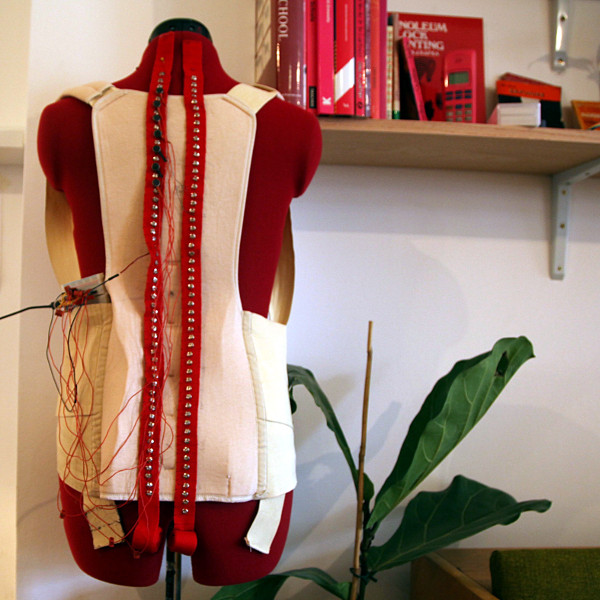

Developing a wearable vibrotactile somaesthetic technology for body awareness
This practice-based research focused on the development of Haplós, a novel wearable system that applies programmable, vibrotactile patterns to the skin for the purpose of facilitating body awareness. To do so, I draw from perspectives across philosophy, somatic practice, and the cognitive neurosciences, weaving their analytical principles and pragmatic approaches through a technology-based design practice. Specifically, I draw from somaesthetic philosophy, the Feldenkrais Method, neuroscientific studies on the effects of vibrotactile stimuli on cortical self-representations, and soma-based design theories and creative work. Through carefully constructed patterns of vibrotactile stimulation, Haplós aims to elicit self-reports of heightened body awareness by supplying the user with higher resolution information about their body through a framework that I call vibrotactile somaesthetics. To the best of my knowledge, Haplós is the first wearable technology system created with the intent of changing the self-representation using vibrotactile stimulation, and generates promising possibilities for innovative cognitive interventions and novel aesthetic experiences and forms.
Kin Design, UK (Conceptual designs for tools for somatic teaching)

Jane Grant, John Matthias, Sue Denham, Mike Phillips, Matt Wade